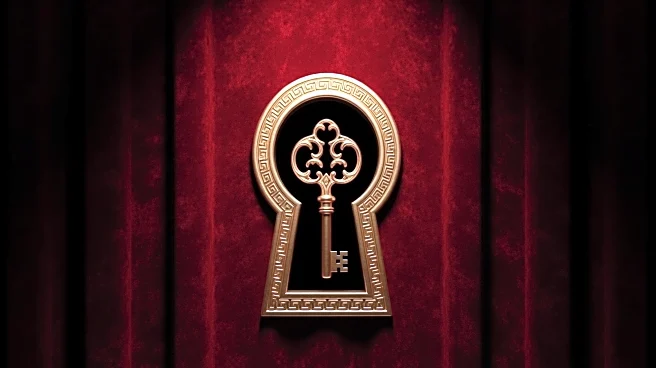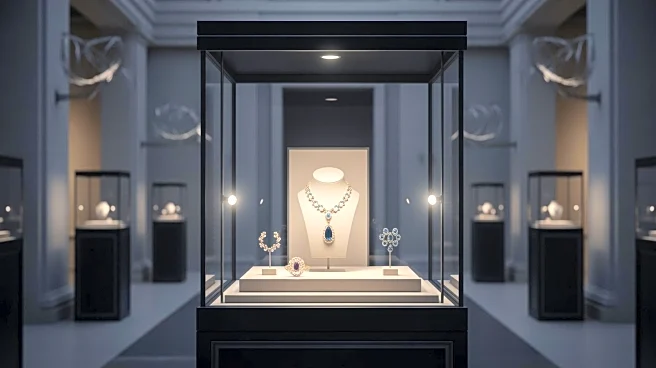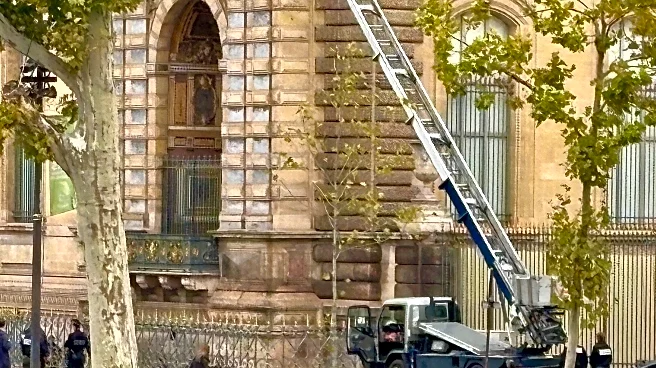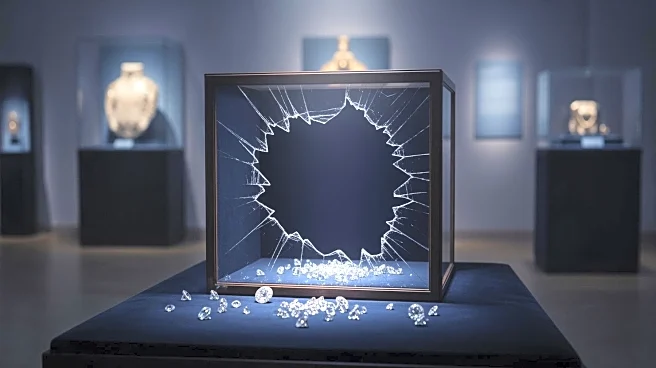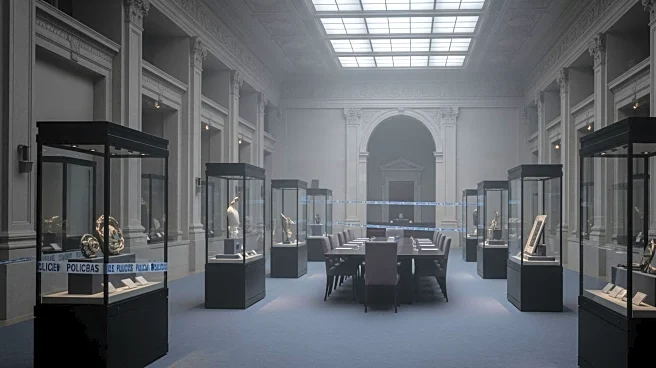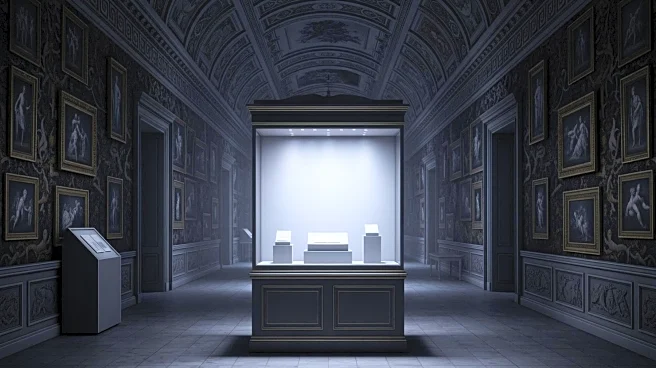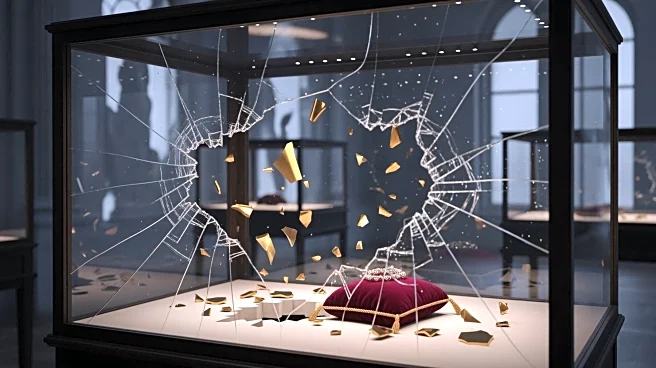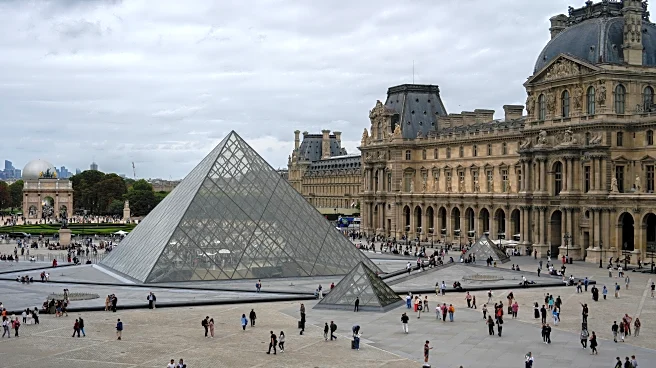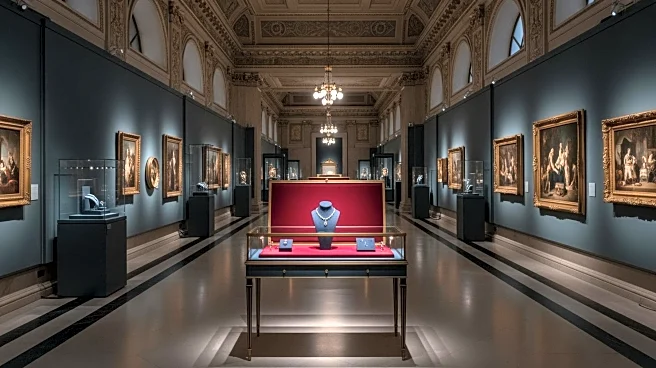What's Happening?
The Louvre Museum in Paris was the site of a significant theft on Sunday morning, where thieves reportedly stole nine pieces from the jewelry collection of Napoleon and the Empress. The perpetrators used
a basket lift to access the museum, forced a window, and smashed display cases to make off with jewels of 'inestimable value.' The incident occurred in the Galerie d’Apollon, a section of the museum that displays part of the French Crown Jewels. The museum was closed for the day as police sealed the gates and evacuated visitors. The French Interior Ministry reported that the thieves fled on two-wheelers and that forensic work is underway to compile a precise inventory of the stolen items.
Why It's Important?
This heist at the Louvre, the world's most visited museum, underscores ongoing security challenges faced by cultural institutions globally. The stolen jewels hold significant historical and patrimonial value, making their loss a cultural blow. The incident highlights vulnerabilities in museum security, especially during times of construction or renovation, as was the case with the Louvre's Seine-facing facade. The theft could prompt museums worldwide to reassess their security measures to protect invaluable artifacts. The event also draws attention to the black market for stolen art and historical items, which remains a persistent issue for law enforcement agencies.
What's Next?
The French authorities are conducting a thorough investigation to recover the stolen items and apprehend the culprits. The museum's closure is temporary, but it may lead to increased security measures and possibly affect visitor access in the short term. The incident may also lead to international cooperation in tracking and recovering the stolen jewels, given their historical significance. The museum's management and French cultural officials are likely to face scrutiny over security protocols, potentially leading to policy changes to prevent future incidents.
